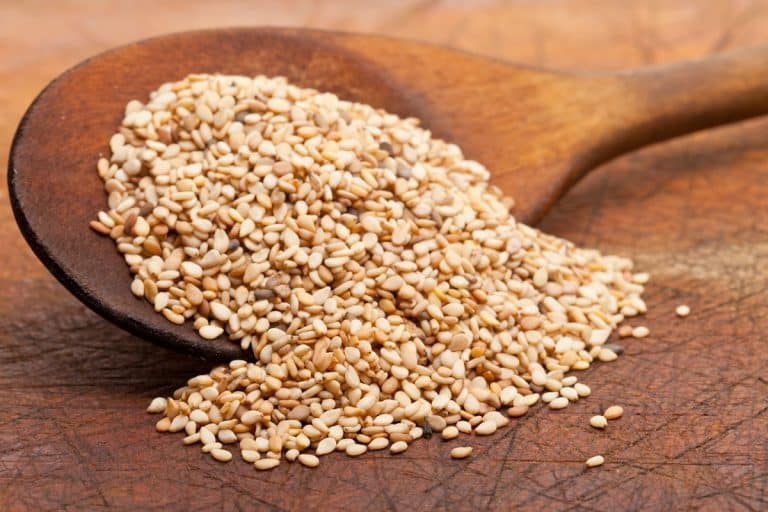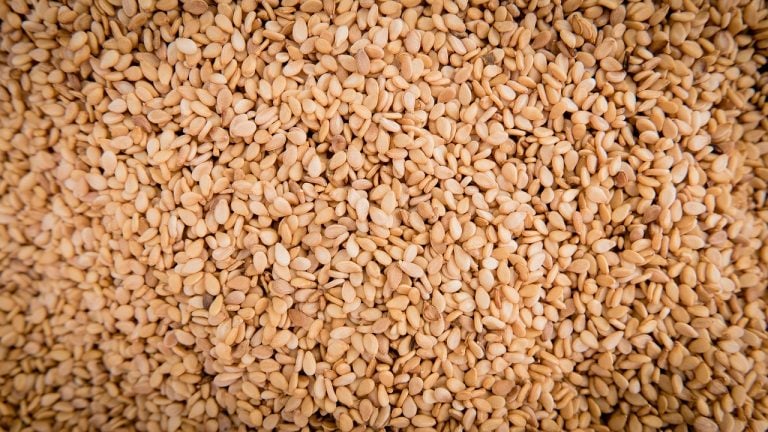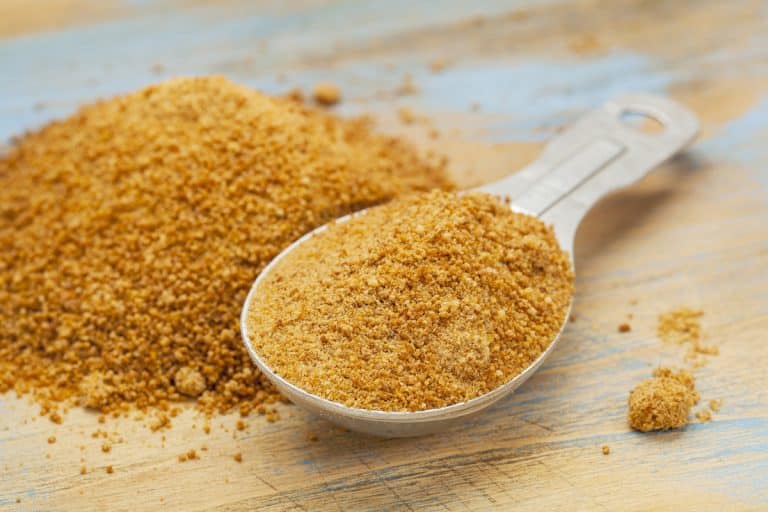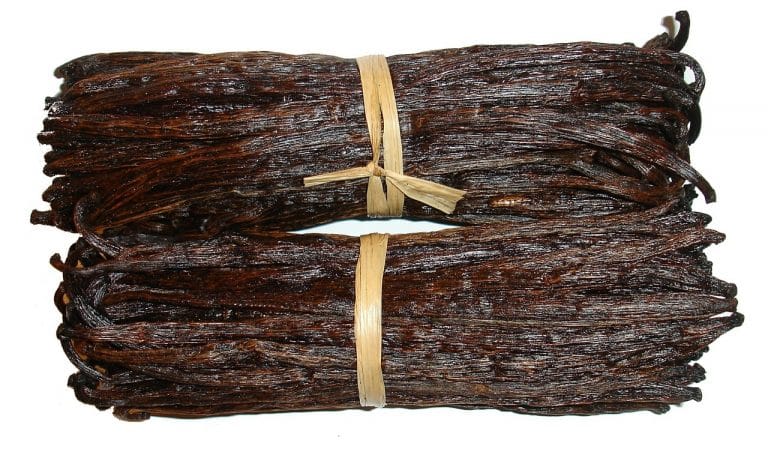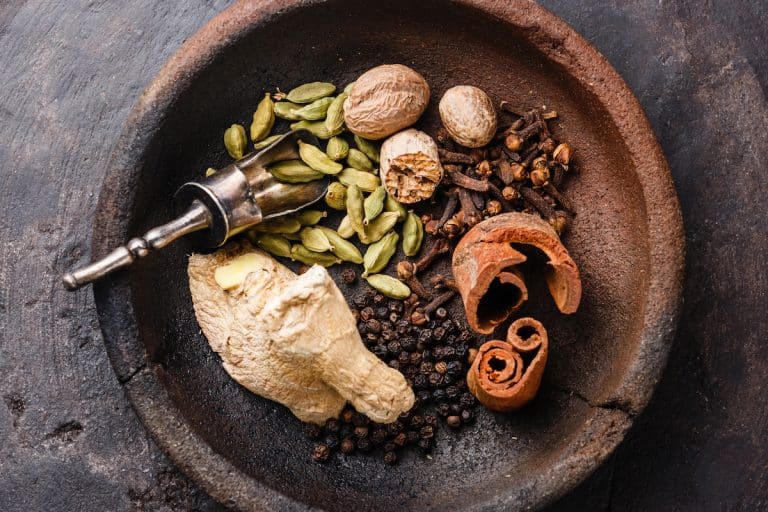You can find sesame seeds in everything from Japanese dishes to American bagels and hamburger buns. It is sprinkled over salads to enhance their crunch and used to make Middle Eastern tahini paste. The versatile sesame seed is useful because of its texture and its nutty flavor. If your recipe requires it and you don’t have any on hand, try a sesame seeds substitute from the list below.
 SPICEography
SPICEography
Sesame Seeds: Not Just For Burger Buns
Sesame seeds are one of mankind’s most ancient foods. They are among the first plants in human history to have been cultivated for their seeds and the oils in them rather than for their leaves, fruits or roots.
The name sesame goes all the way back to Ancient Egypt. The Ancient Egyptian term for sesame was sesemt. Other mentions of sesame come from the Assyrians. An Assyrian myth states that their gods drank sesame wine before creating the Earth.
Sesame is thought to have originated in India, but its use has spread to both China and Africa. The Chinese also used sesame oil as a fuel for their lamps 5,000 years ago.
Palm Sugar: A Healthier Sweet
Palm sugar is made from the saps of various palm trees. The species of palm used depends on the region in which the sugar is being made. In the Canary Islands, syrup made from the sap of the palm tree was in use well before the arrival of Europeans. The …
What’s A Good Cream Of Tartar Substitute?
Cream of tartar is a product of wine fermentation that has many applications in baking. It is useful both for leavening and as a source of acidity. Cream of tartar is also easy to find and relatively affordable, so you should try to keep it on hand if you bake meringue pies and make simple syrups regularly. Cream of tartar has an indefinite shelf life as long as you store it away from heat. If you find yourself out of it unexpectedly, try some of these cream of tartar substitutes.
Table Salt: A Fundamental Flavor With A Long History
Salt has been a popular condiment for most of human history, and for much of that time it has not been nearly as inexpensive and as easy to find as it is now.
Ancient Egyptians used salt as a part of their religious offerings and the Ancient Greeks used it as currency. In Ancient Greece, slaves could be purchased for salt. The practice gave rise to the expression “not worth his salt.” It held the same value as gold in Ancient Rome. In the Roman Republic’s early years, it was responsible for the city’s growth with roads being constructed to ease its transportation. Similarly, it has been an important commodity in China for more than 2,000 years; it was one of the factors in the growth of China’s ancient empires.
Vanilla: A Flavor From Orchids
Like chili peppers, vanilla comes from South and Central America, as well as from the Caribbean. It is one of the thousands of orchid species.
Historians believe that the first people to cultivate it were the early dwellers on the east coast of Mexico called the Totonacs. The Totonacs were conquered by the Aztecs, who got their vanilla before being conquered by the Spanish in the 16th century.
The Aztecs flavored their chocolate with vanilla and so did the Spaniards once they grew accustomed to the taste. As a result, Europeans considered vanilla to be nothing more than a flavoring for chocolate for decades. Only in the 17th century did the use of vanilla without chocolate become popular. In England, Queen Elizabeth I enjoyed sweetmeats flavored with vanilla. By the 18th century, the French were making ice cream flavored with vanilla.
Cream of Tartar: A Leavening Agent That Comes From Wine
Also known as tartaric acid, cream of tartar has been around since 800 AD when it was discovered by a Persian alchemist. It is a by-product of wine-making and forms initially as a product called argol on the inside of casks. The argol can be refined into the product that we know as cream of tartar.
The modern process of making cream of tartar came from a Swedish chemist named CW Scheele in 1769. In 1832, French physicist Jean Baptiste Biot would find discover various physical properties of cream of tartar such as the fact that it can rotate polarized light. It would be further investigated by Louis Pasteur in 1847, who investigated the shapes of its crystals. He observed that it had asymmetrical crystals.
Chai Spices: A Blend Of English And Indian Tastes
Chai is the Indian word for tea. The chai that most westerners know is actually masala chai, which means spiced tea. The spices used in this tea are what is known as chai spices. Masala chai has been used for thousands of years. Depending on which of masala chai’s origin stories you believe, masala chai was created 9,000 years ago or 5,000 years ago. The location is also disputed as some say that it was first made in India, others say Thailand.
The earliest masala chai was made with the chai spices only and there were no tea leaves included. It was created as an ayurvedic remedy for a range of minor health issues.
